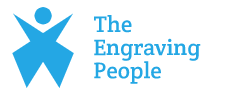A reverse search is for people who want to find information through a specific link or image. While many people use keywords to find the products in the end, the result highly depends on what you give. Google designers have kept this issue in mind while creating it. Google reverse search came into effect in 2011 to remove the problem of broad results.
When using reverse search, people can upload data, links, and images as a target for Google to focus its search on. It’s a top-rated search engine that generates results by studying the data, ensuring it meets the user’s requirements. Google will base its search highly on the data and images uploaded. Google will give only the matching images to the users from millions of images.
How it Works
Methods of using Google image search are simple. If it is an online image, people can right-click on it, and a drop-down menu will open. In this menu, users can click on the “search image” option or copy-paste the image’s link on the search engine. On the other hand, people can select an image from the storage device by dragging the image on the search engine.
Results of both types of searches are swift. Although there are billions of images on the internet, the search engine focuses mainly on images that match the setting of the image. Regardless of shape and color, images are immediately presented in the search result. Above all, when using the search engine, there are no limitations on size when searching the images.
Since the Google browser is accessible on mobile phones, people do not have any trouble using it to search for images on them. Google search has a similar working process when using the tools on mobile. Above all, current mobile phones automatically come with the option of google lens. The mobile gallery allows Google lens to access the images saved in it.
The lens studies the image and provides the results through simple means. In comparison, there is no means of searching an image through drag and paste on the search engine. People can use third-party software to find similar images.
Pros and Cons
Learn the Pros and Cons of Google search before using it on any device from the following.
Pros of Image Search on Google
- Google is a popular search engine connected to a databank containing billions of images. No matter the image a person searches for, it always shows the most relevant results.
- Google’s popularity itself defines its ease of use. Otherwise, people worldwide would never use it.
- As a search browser, it is extremely fast and can be accessed on any device. Search through any device presents results in a matter of seconds.
- It automatically sorts images according to their size, colors, and type.
- Verifying the source of an image becomes simple when using the Google search engine.
- Google provides advanced options to users. This option allows a person to set filters and restrictions on the search results according to their needs.
- Using Google search for images assists in separating images that have restrictions on them. Users can specify to Google whether the image they want should be restricted or free to use.
Cons of Image Search on Google
- Google searches for the most relevant information on the keywords people provide.
- Google search uses keywords and texts to find the results. The broad text provides broad results. Make sure to provide precise information to the search engine.
- Metadata on Google is not standard.
- The images on Google are protected by copyright. Therefore, people might not gain access to their desired image.
- Suppose the image on Google is protected; it will not allow you to process the image under any condition. Users must have the authority of the image’s creator if they want to access and use it.
- There might be images that Google cannot project in the search results. It will provide links to these images at the end of the page for the user.
Conclusion
While image search is indeed difficult, it becomes a simple search if you know how to use google reverse search. Whether you like it or not, people worldwide are adopting reverse image search to generate better results.
References:
1: The Rhetoric of Google Lens: A Postsymbolic Look at Locative Media
Publishing date: 03 Feb 2021
https://doi.org/10.1080/07350198.2020.1841452
2: Texture analysis of medical images
Publishing date: 17 November 2004
https://doi.org/10.1016/j.crad.2004.07.008
3: The Life Cycle of Images: Revisiting the Ethical Treatment of the Art Therapy Image
Publishing date: 11 Mar 2013
https://doi.org/10.1080/07421656.2013.757757





